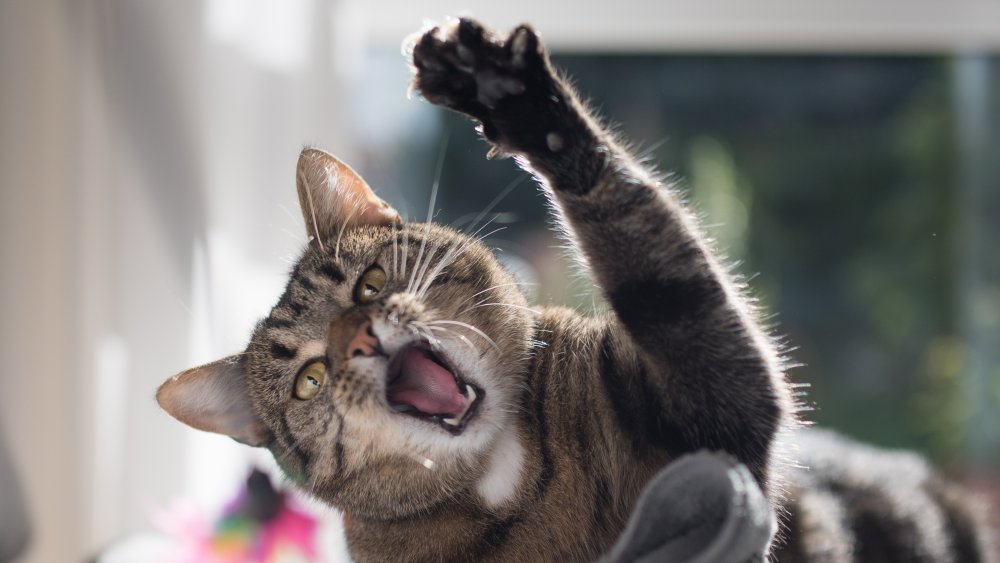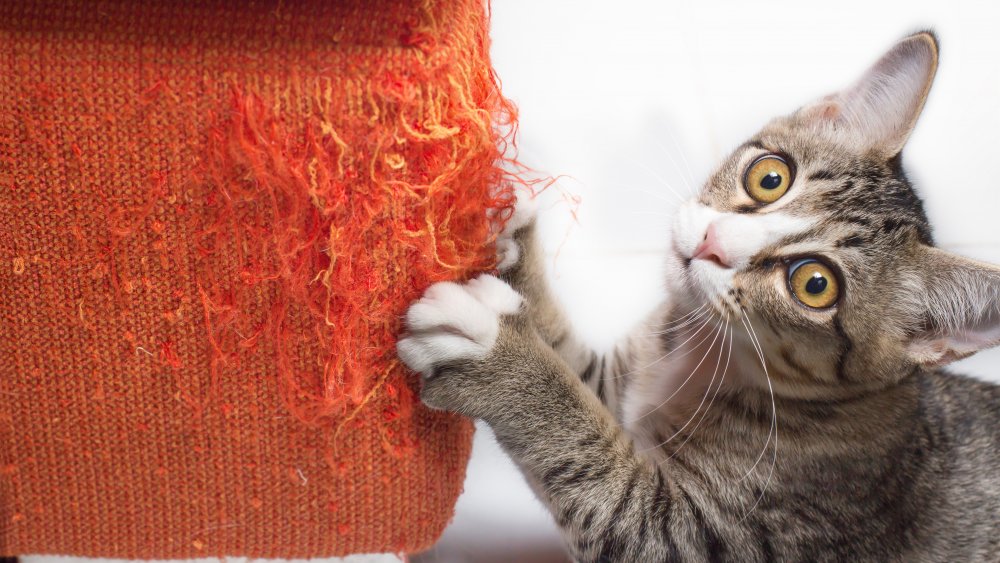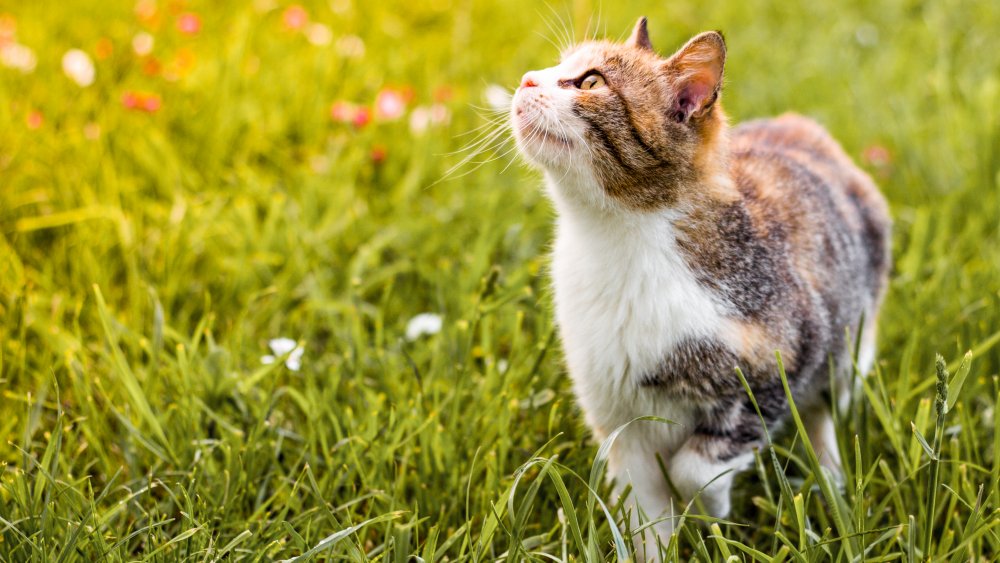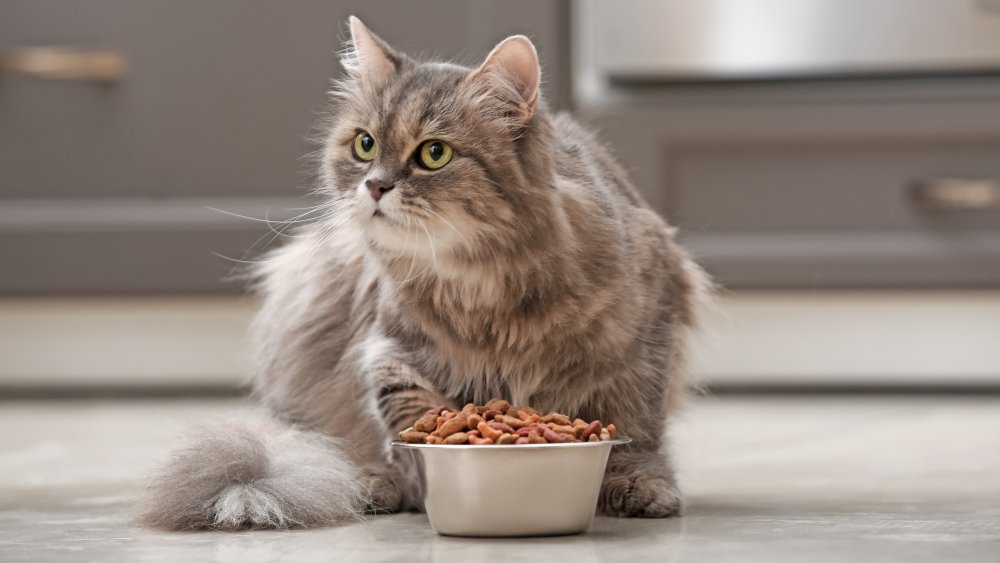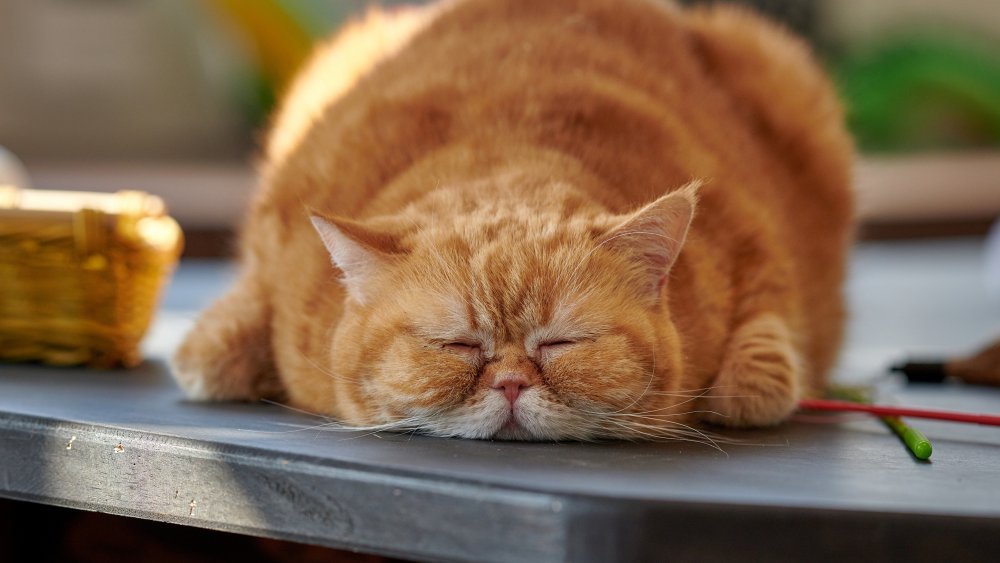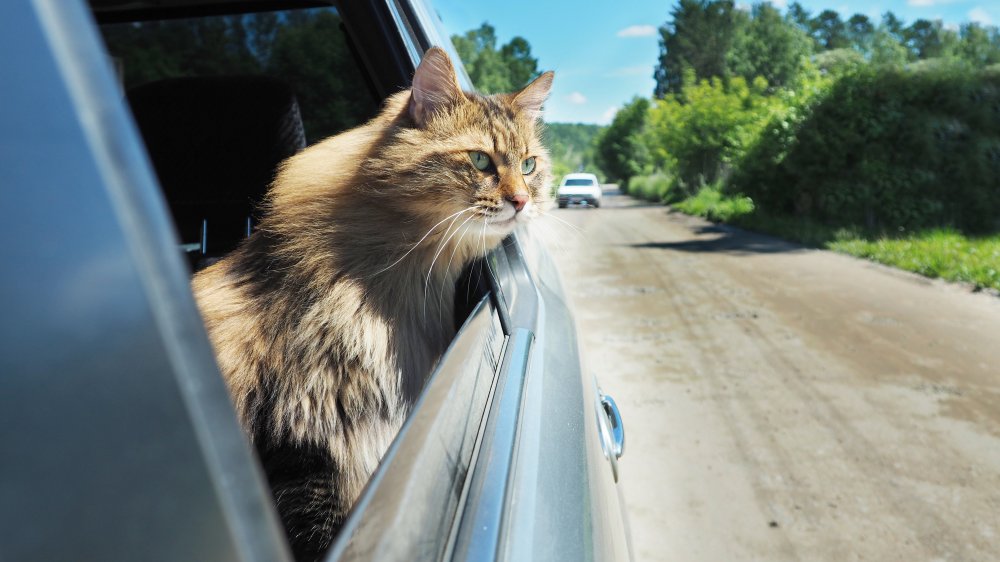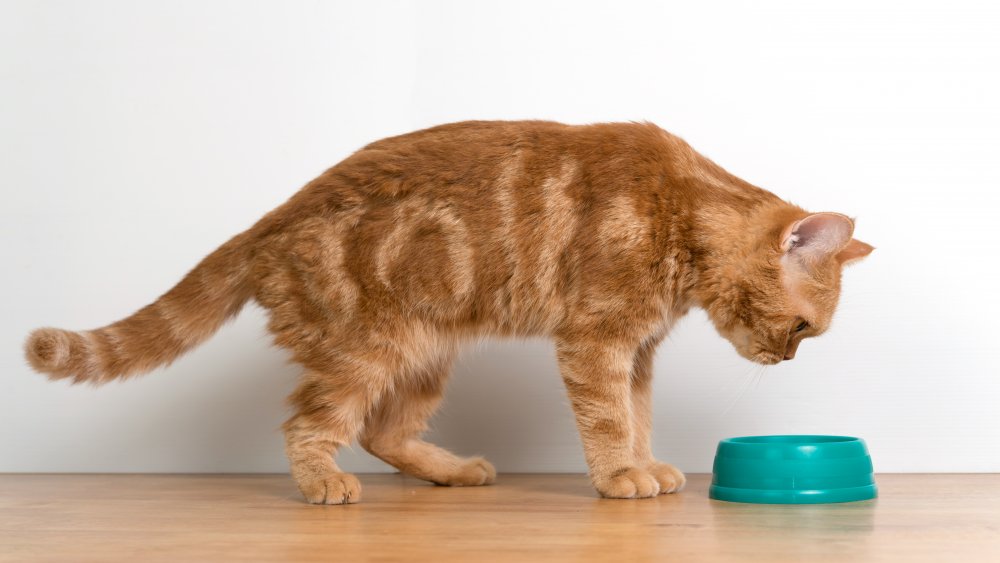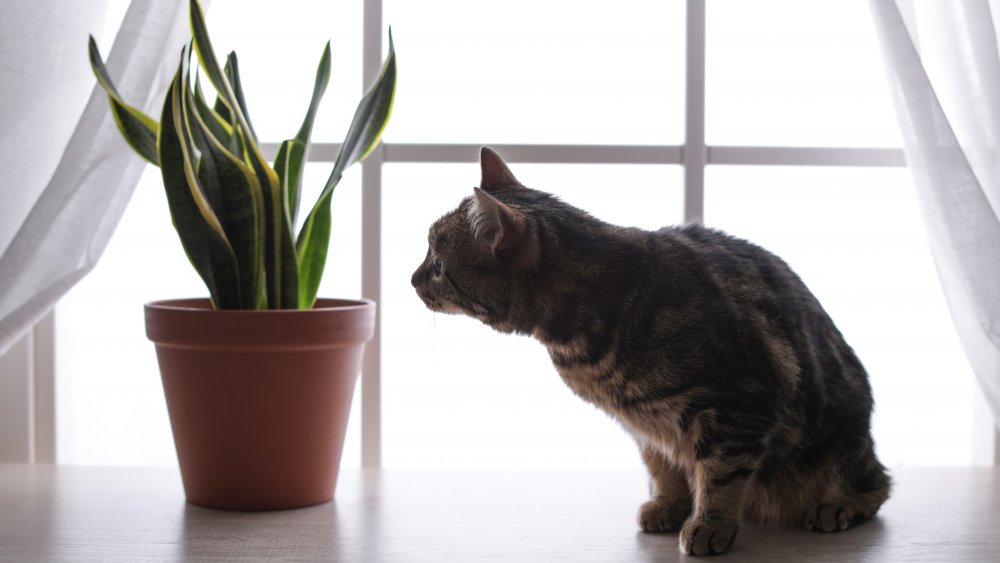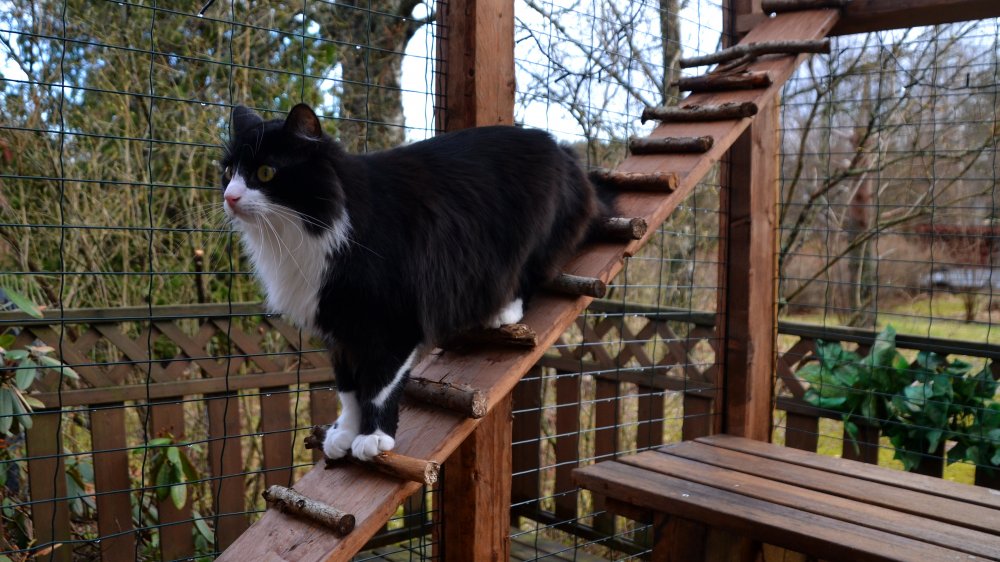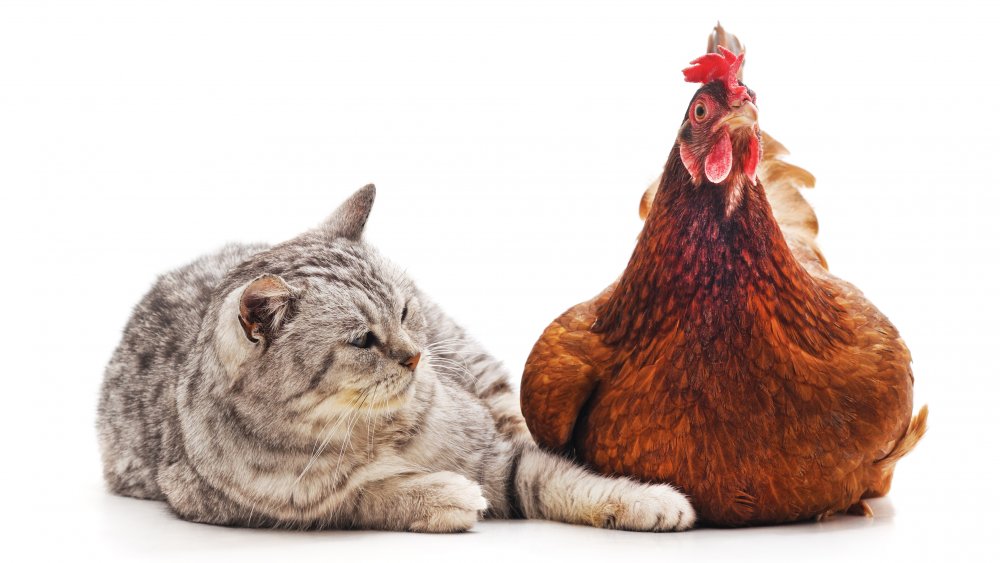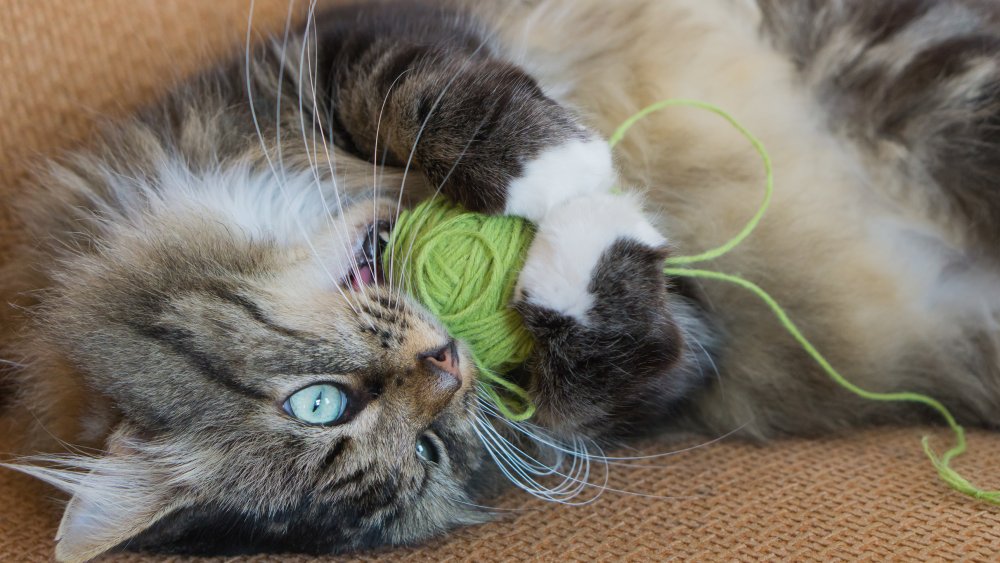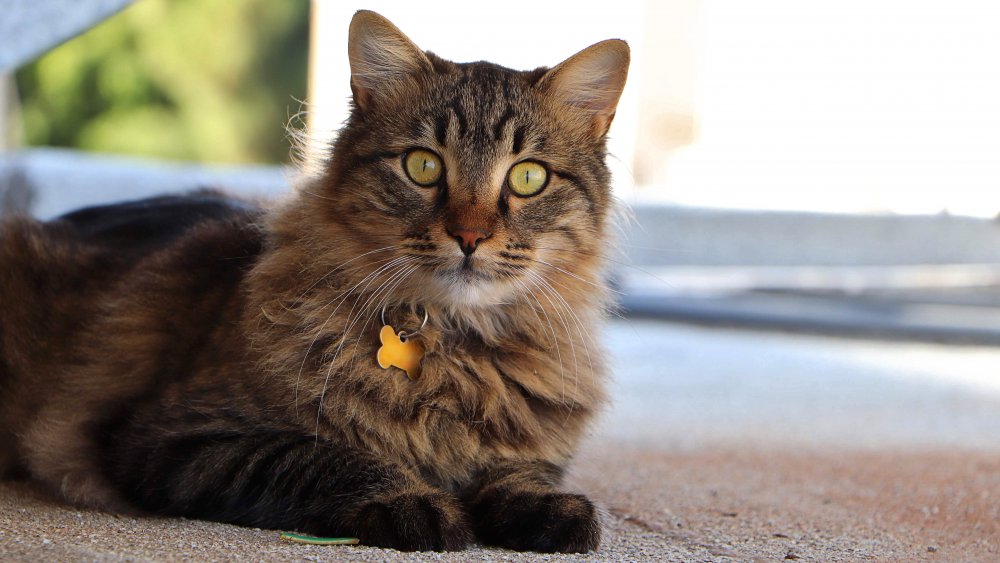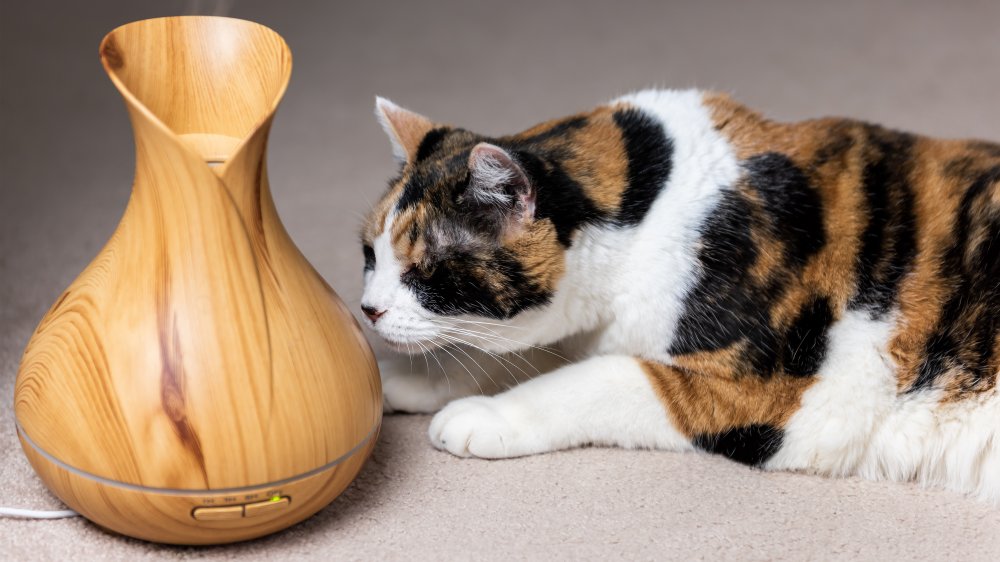Things No One Should Ever Be Doing To Their Cat
We love our cats, and they mostly don't give a crap about us but whatever. We still love them, despite all the ankle-biting, snubbing, laptop sitting, affection denying, and butt-showing they give us in return. And because we love our cats we want what's best for them, but here's the thing — you might not actually know what's best for your cat, because there are some pretty weird and benign-seeming things in our homes that can be dangerous for our feline friends (or maybe "friend" is too strong a word, so we'll just say "indifferent roommate who is perpetually behind on the rent") and it's quite possible that no one ever told you what those things are.
Now, there are also a few things on this list that are common knowledge or really should be common knowledge, but no one is pointing fingers. So just in case you're new to cat ownership or you're still doing things the way your grandparents did, well, here is a not-very-exhaustive list of the things you and everyone else should not be doing to your indifferent roommate who is perpetually behind on the rent.
Removing cats' weapons of mass couch destruction
If cats were still living in the wild, they'd use their claws to climb trees, dispatch prey, and attack the ankles of bears or something. They wouldn't last long as a species, but that's totally what they would do.
The common domesticated cat has not evolved much since that time. Well, they have somehow managed to brainwash an entire species into letting them live indoors and eat free food while mostly just showing their butts in return, but other than that they do still possess similar physical requirements. They have to (have to) bat Lego around on the floor. And they have to scratch things. And we humans hate when our $3,000 sectionals get scratched up.
In the past, humans responded to the destruction of $3,000 sectionals by declawing the offenders, but most experts today agree that declawing is unnecessarily cruel. According to the Humane Society, the declawing procedure doesn't just remove the claw, it also removes the last bone on each toe. A declawed cat may develop permanent pain and/or complications such as nerve damage and bone spurs. Cats may also develop behavioral problems — because it hurts to scratch in a litter box, recently declawed cats may give up using the litter box altogether. And without claws cats may turn to biting as a form of self-defense. So it may be a win for the $3,000 sectional, but it's a big loss for your cat.
Confusing a cat with a tiger
Cats were born to stalk, pounce, and kill things, so it does seem kind of cruel to keep them locked up in a house, where they do nothing but sleep in sunbeams all day and bat Lego around on the floor for that three and a half minutes when they're not sleeping in a sunbeam. Yes, the life of an indoor cat, so tragic.
Some people still persist in believing that for a cat's life to be truly complete, the cat must be either exclusively an outdoor cat or an indoor/outdoor cat but never just an indoor cat, and in fact the opposite is true. Outdoor cats may be living like their ancestors (sort of), but that's not necessarily a good thing. Cats aren't tigers. Let's put it this way: If you traded your comfy jeans for animal skins and moved into a cave, you'd be living like your ancestors, too, but would you feel more fulfilled? You're not a caveman, so no.
According to She Knows, outdoor cats live about half to a quarter as long as indoor cats. That's because outdoor cats face a myriad of dangers like predators, speeding cars, poison, and altercations with other cats. Outdoor cats are more susceptible to picking up viruses and parasites, too. So maybe an outdoor cat has the unique opportunity to sit and stare at a gopher hole for hours, but that doesn't make all the mortal peril worthwhile.
Confusing a cat with a person
Your cat probably becomes affectionate in the presence of cheese, or perhaps bacon. Your cat probably isn't cunning enough to stick around after the cheese or bacon is gone, though, you know, to convince you that all that affection isn't just about cheese and bacon. Well, whatever. It's not like you're going to stop filling the food bowl every morning, so affection isn't exactly necessary for your cat's self-preservation or anything.
Since food-related affection is the only sort you're likely to get form your indifferent roommate, you may be tempted to offer up all sorts of human treats as a form of affection bribery, but don't. Cats aren't meant to eat human food, and certain foods can lead to vomiting or worse, serious illness and even death.
You probably already know that chocolate and onions are bad for dogs, but those foods are also bad for cats, although granted, cats don't tend to indiscriminately hork down everything they see the way dogs do. But just to be on the safe side, don't leave half eaten slices of chocolate cake laying around, and the same goes for bowls of alcoholic punch, grapes and raisins, or guacamole — according to The Spruce Pets, those foods can all be toxic to cats.
Confusing a cat with a bird
When your cat surprises you by teleporting directly into the bowl of chili you were eating, you might be tempted to give him or her a little push off the edge of the table. Because teleporting is creepy, and also no one likes cat butt in their chili. Anyway, cats always land on their feet, so what's the big deal?
Well, cats often do a pretty good job of landing on their feet, but they're not birds. Cats can't fly, and falling from an elevated surface is still pretty dangerous for them. Anyway, the ability to land on all fours doesn't mean anything if a chair hits you on the head on the way down.
Pushing your cat from that elevated surface also doesn't really address the problem. Your cat probably won't even connect the act of jumping on the counter with the act of being pushed off of it, so it's fairly useless as a form of punishment. Instead, you should discourage your cat from jumping up there in the first place. Don't ever offer food on those elevated surfaces, because then your cat will think the counter is a cat-friendly smorgasbord. Instead, Pets Lady recommends providing another more interesting elevated surface that isn't off-limits, like a cat tree, where you can move your cat whenever he or she is coming between you and your chili.
Confusing a cat with a dog
Dogs love cars. They hang their heads out the window, tongues flapping like flags, drool splattering all over the guy who's tailgating you. It's a win-win. So if dogs love cars, should cats love them too? Some people, evidently, think "yes."
It's actually pretty unclear why anyone would turn a cat loose in a car. Perhaps if you enjoy wearing a cat as a fashionable headpiece while you're driving down the freeway and you don't especially care if you and Kitty both end up victims of a horrible car accident, well, then maybe don't ever get yourself a cat carrier. But from a common sense perspective, letting your cat roam free in a moving vehicle is a really terrible idea.
According to the Press Enterprise, in some states it's actually legal to drive a car with your pet in your lap — notably California, where pretty much everything is illegal except driving a car with your pet in your lap. That doesn't mean you should totally do it, though. A cat who freaks out and lands in the footwell can interfere with your ability to use the brakes or the gas. And if there's an accident, your cat doesn't stand a chance. And we won't even get into the part where your stressed feline will poop or barf all over your leather seats. It's totally not worth saving a few bucks on a carrier, or whatever other inconceivable reason you had for doing this.
Feeding a cat only dry kibble
Okay, let's just get this out there right up front. Wet cat food is gross. It's not just gross, it's gag-inducing. Even the chicken and beef versions are disgusting, and if you can't stomach the smell of the chicken and beef versions, there's no way you'll be able to stomach the stuff made out of the salmon or tuna.
Kitty loves wet food, but even that's sometimes not enough to convince weak-stomached cat owners to hold their noses and dish the stuff out every morning. So here's a little extra incentive, in case you're one of those people who would rather just avoid the mess and stick with the dry kibble.
There are health reasons why you need to make sure your cat has wet food in addition to the dry stuff. According to Noah's Ark Vet, most cats don't drink a lot of water, so they need to get moisture from the things they eat. Cats are vulnerable to urinary tract infections, and the risk is compounded by a diet that is high in dry kibble and low in horrible stinky stuff. So buck it up, hold your nose, and dish up the stinky. Or just make your spouse do it.
Putting random plants all over the house
Cats are carnivores. Dogs, on the other hand, lean omnivore, so we worry about what they're eating a little more than we worry about what our cats are eating. Cats don't tend to enjoy the same sorts of foods dogs enjoy, which includes pretty much everything on a human's plate plus vegetables, anything in the trash can, and also the poop of other animals. Cats, on the other hand, mostly prefer to just sit on your plate so that you can't personally eat the food that's on it.
Still, you should be aware that cats do occasionally eat plants. Grass eating in particular is kind of a cat pastime, and a cat that doesn't spend time outdoors may turn to houseplants to satisfy that odd desire to consume something green. So you do need to be careful about the type of plant life that you bring into your home. If it's one of the more than 400 species listed in the ASPCA's database of toxic plants, an experimental bite from Kitty could prove fatal. So before you buy a new house plant it's important to just double check to make sure it isn't something toxic. Pothos (devil's ivy), tulips, azaleas, and holiday plants like poinsettias, mistletoe, and Easter lilies are all on the list, but that's only a few of them. Make sure you do your research before you go to the nursery.
Keeping your cat totally isolated from the outside world
Keeping your cat outside is not a great idea, but does that mean you ought to black out all the windows and pretend like the outdoors doesn't exist, so at least your pet won't know what's out there? Of course not. You may think that a lip-licking cat sitting on a windowsill while birds cavort on the feeder just inches away is a sad sight, but please be reassured that your cat is not suffering during that experience. Sure, pouncing on those cavorting birds is probably pretty high on your cat's bucket list, but let's face it, it's not really in the best interests of the cat or the birds.
It might help if you think of windows as movie screens for your cat. A cat watching the world go by is going to be a happier cat than a cat left in the dark with no visual stimulation. Of course it is also your duty as a pet parent to make sure your cat has plenty of things to do inside, like chasing catnip mice and other objects that will not suffer grave injury or death because of the interaction.
If you feel you must give your cat an actual outdoor experience, MetLife suggests building a catio, which is a fully enclosed area where your cat can feel the grass beneath his or her paws while also remaining safe from dangerous interactions with cars and other animals.
Confusing a cat with an undomesticated predator
It's not enough to give up meat, now we must also give up cheese and eggs and never cook anything. Well, at least that's what some followers of the faddish "raw foods" diet like to trumpet, not that most of us are actually listening to them or anything. But some of these folks have extended the "raw foods are natural and therefore must be good" mentality to the food their pets eat, too, even though you're getting into whole other kinds of bad territory when you're talking about a raw food diet for a carnivore.
Predators don't build campfires and make stews out of dead rabbits and deer, so it does kind of seem like it must be natural and therefore better for cats to eat raw food just like their wild counterparts do. Guess what, though, it's not. Raw food is more natural than cooked and processed food, but rabies is pretty danged natural too and you're not out there trying to get rabid skunks to bite your cat because that's what nature intended. Raw meat can carry parasites and disease-causing bacteria — that's exactly whey we cook our own meat, and why we should only give our pets similarly cooked and processed food. And don't think that commercially prepared raw food is a safe alternative, either — according to the Pet Health Network, commercial raw pet foods are more likely to carry Salmonella and Listeria than traditionally prepared formulas.
Leave yarn and rubber bands laying around
Cats and yarn go together like dogs and butt-sniffing. Cats love to play with yarn, and that's not just a dumb stereotype. Give a cat a ball of yarn and it's great entertainment for both of you.
Would you believe, though, that yarn can actually be dangerous for your cat? According to CatHealth.com, the sandpaper tongue that cats use to groom themselves can be hazardous when paired with a piece of yarn — that's because the barbs on a cat's tongue make it impossible for Kitty to spit out a bit of string once it gets caught, and the only alternative is to swallow ... and keep swallowing until half the ball is at the point of no return.
That's not just unpleasant for your cat, it's also dangerous. The string can get caught in the intestines causing intestinal tissue to bunch up. That, in turn, can restrict blood flow, which can lead to tissue death. Sometimes the yarn might even cause the tissue to tear, which can lead to systemic poisoning. Surgical removal of the yarn may be the only way to save your pet's life, and it's expensive. So yeah, let your cat play with that ball of yarn while you're watching, but don't leave your cat alone with it. And take care that there are no strings, rubber bands, hair ties or similar objects laying around your house that your cat might get into — those things are just as dangerous.
Buy the wrong kind of collar for your cat
Collars can be life saving for your pet. An indoor-only cat who gets out into the world can be quickly returned home with the help of a tagged collar. Microchipping can do the same thing, but only if the animal is picked up by a shelter or other organization that has the ability to read a microchip — for a fast return home, a collar is really your best bet.
There are problems with collars, though. According to IHeartCats, the wrong kind of collar can cause injury — it can get caught up on a branch or other object and cause entrapment or even strangulation. Sometimes, cats can get their front legs under the collar, which might lead to bone-breakage or laceration or other kinds of grave injuries to both the neck and the leg.
So if you are going to put a collar on your pet, make sure it's the right kind of collar. Breakaway collars are designed to come off in dangerous situations. The drawback is that a cat who loses his or her breakaway collar won't be easy to identify, so you should always have a microchip in place as a backup. And remember, it's better to have a lost cat who at least has some potential to return home than an injured cat who may be lost forever.
Use an essential oil diffuser
Perhaps and you're tired of having to smell that stinky cat food every morning. Or maybe the smell of the litter box is getting to be too much for you (hint: clean it more often), so you bought yourself an essential oil diffuser to help return a sense of not-stinky to your home.
Well guess what, there's mounting evidence that essential oil diffusers are really, really dangerous for cats. According to the Pet Poison Helpline, essential oils are especially toxic to cats because they can be absorbed internally and externally, through the skin. The oils are metabolized in the liver, and cats lack the enzyme required to process and eliminate them. An affected cat may drool, vomit, or have difficulty breathing. If the liver fails, the cat will die. Even if the cat doesn't come into physical contact with the stuff, just inhaling it can cause respiratory distress.
Your best bet for removing the stink? Febreze, which contrary to rumor is not actually toxic to cats unless you spray it directly on their fur. And you know better.
